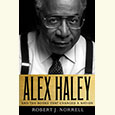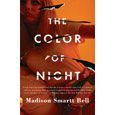Dangerous Stranger
Rita Sims Quillen delivers a thoughtful thriller
Rita Sims Quillen’s novel Wayland offers a slightly different twist on the timeless “stranger comes to town” theme. All the usual elements are here: a close-knit community with a few secrets, a loving family that has its troubles, and a mysterious, compelling outsider bent on stirring things up. But Quillen gives her outsider a past and a point of view, and she has a complex take on how fear and well-intentioned deception make good people vulnerable to those who would do them harm.
 The novel opens with a fellow named Buddy Newman entering a hobo camp in southwestern Virginia. It’s the early days of the Depression, and the encampment is a rough place, but Buddy is well equipped to navigate it, having been on the road for “four long years.” We soon learn that his appealing name is a fiction, and his formative influences include a drunken mother and sadistic father. Buddy is a schemer, a con artist with a talent for reshaping himself to suit the scam. “When a man is hollow inside,” writes Quillen, “he can fill himself up with anything he needs, get bigger or smaller, stay fluid or form a solid wall.”
The novel opens with a fellow named Buddy Newman entering a hobo camp in southwestern Virginia. It’s the early days of the Depression, and the encampment is a rough place, but Buddy is well equipped to navigate it, having been on the road for “four long years.” We soon learn that his appealing name is a fiction, and his formative influences include a drunken mother and sadistic father. Buddy is a schemer, a con artist with a talent for reshaping himself to suit the scam. “When a man is hollow inside,” writes Quillen, “he can fill himself up with anything he needs, get bigger or smaller, stay fluid or form a solid wall.”
Buddy finds his way to the nearby town of Wayland and the home of Eva and Andrew Nettles, who own a local sawmill. Eva, alone during the day with her young niece, Katie, catches the drifter trying to steal a chicken and chases him off with a gun. That night, with Andrew at home, Buddy returns to apologize, begging for a job and a chance at redemption. He quickly worms his way into the Nettles’ household, and it becomes clear to readers — though not to the Nettles — that he plans to rob the family of something far more precious than a chicken.
Eva’s perspective dominates the omniscient narrative. She’s the emotional center of the story, and we discover her growing misgivings about Buddy through her journal entries. She writes of the dismay she feels as Buddy charms her husband and Katie, and this utter stranger becomes a constant presence at their dinner table and in their lives. “Andrew don’t seem to see the extra work and expense he’s took on,” she observes. “He’s happy as a hog, walks around whistling to himself and talking more than he ever used to. It’s like Buddy is the brother he never had.”
 As Buddy’s true nature is revealed, the novel builds to a suspenseful climax, but Quillen doesn’t let the story lapse into pure thriller. The relationship between Eva and Andrew, and the loving family they’ve created out of a history of loss and hardship, is always at the center of the narrative. Quillen shows us how the couple’s failure to understand and fully trust each other creates the weakness Buddy exploits.
As Buddy’s true nature is revealed, the novel builds to a suspenseful climax, but Quillen doesn’t let the story lapse into pure thriller. The relationship between Eva and Andrew, and the loving family they’ve created out of a history of loss and hardship, is always at the center of the narrative. Quillen shows us how the couple’s failure to understand and fully trust each other creates the weakness Buddy exploits.
Inability to speak — and hear — uncomfortable truths is a running theme in Wayland. Eva is not the only one who sees that there’s something profoundly wrong with Buddy, but every person who could enlighten Andrew has a reason for keeping silent or downplaying their concerns. Andrew won’t listen to Eva’s mild protests about Buddy’s behavior, and she tries to believe that she’s making too much of it all, telling herself, “I need to rethink my perspective a little bit and be more grateful!” Doubt seems to make everyone powerless.
Everyone except the bad guy, of course. In Buddy, Quillen has created a memorable villain. He’s a multi-talented hustler, able to play the pitiable loser and charming raconteur as needed. He spouts poetry and makes beautiful gifts to impress his targets, but he has a thoroughly chilling inner life. We know enough about Buddy to understand how he might have become so destructive, yet he remains fundamentally mysterious. Evil, Quillen suggests, is larger than the small men it employs, and the best weapons against it are love and honesty.

Maria Browning is a fifth-generation Tennessean who grew up in Erin and Nashville. Her work has appeared in Guernica, The Los Angeles Review of Books, and The New York Times. She’s the editor of Chapter 16.


